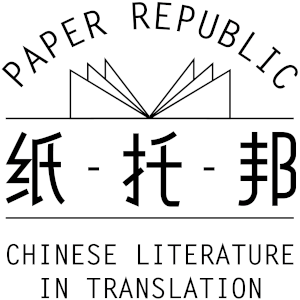Spring 2017 will see the publication of The Ventriloquist’s Daughter, by Lin Man-chiu (tr. Helen Wang), the fourth Young Adult novel translated from Chinese and published by Balestier Press. Originally from Taiwan, Lin Man-chiu has travelled extensively in South America, and her experiences there inspired this story. The following piece is adapted from the Author’s Preface in the Chinese edition, and we’re delighted to have permission to publish it here.
On my travels through South America I heard many fantastic stories, but it was the ones about the child-souls of the Andes that truly captured my imagination. Five hundred years ago, when the Incas were still living in the Andes, child sacrifice was part of religious life. The Incas believed that offering a child to the gods was like sending the child to heaven, and that this act would bring blessings upon their people and upon themselves. For these reasons, many parents were willing to offer a child.
On the day of the ceremony, crowds gathered as the chosen children, holding a favourite doll in their arms, were placed on alpacas, and, to the rhythm of the panpipes, set off for the snow-covered mountaintops, five thousand metres above sea level. The journey took several days, and involved frequent rituals along the way. As they climbed higher, the villages became sparser, and the crowd gradually fell away. And, as the air became thinner, the children, starved of oxygen, began to feel sleepy. When they finally reached the ice-covered peaks, only the shaman and a few others remained to carry out the sacrifice. They bound the children’s limbs to their torsos, and laid them to rest in graves three metres deep, with their dolls beside them.
The children died in their sleep. Their souls could not to ascend to heaven, but were left to wander the snow-covered mountains. Sad and lonely, these abandoned child-souls saw the decline of the Inca Empire; they saw the Spanish colonists come and go, and saw the South American peoples fight to defend their sovereignty. Throughout these battles for political power, the child-souls saw the Inca population dwindle. They worried that their wandering souls might be forgotten completely. By the twentieth century, the Incas were buried in the ashes of history, and the child-souls were indeed forgotten by all but a handful of tomb raiders, half-believing in the old legend. One day, just such a tomb raider climbed to the top of a snow-covered peak and found his hoped-for treasure. When he returned home, the legend of the child-souls roaming the mountains was planted anew in people’s memories, this time with added colour: the child-souls had slipped inside cloth dolls, brought back by the tomb-raider to the human world.
The legend touched something inside me, and when I saw the child mummies in a museum in Argentina, The Ventriloquist’s Daughter was born. The story hinges on the relationship between a father and his daughter. Both know the pain of losing a loved one (his wife, her mother), and both come to regard a doll from an ancient burial as human. When the father’s beloved wife dies, he runs away from the role is expected to play in the hospital founded by his forefathers. He travels through South America, walking like a zombie from one town to the next, until one day, he comes upon a remote little village in the foothills of the Andes. At the lowest point of his life, he meets Carola, and his life is turned around. Casting off his name and profession, he becomes Carolo, the street ventriloquist. Carolo and his ventriloquist’s doll Carola become one, and in a life of make-believe, travel to all the cities and towns in South America.
Grieving for her mother, and longing for her father, Liur remains with her grandparents in the family house that is mired in sadness. Her life is like a stagnant pond, whose only source of fresh water are the postcards that arrive from South America. While she waits for her father to return, she finds solace by her mother’s grave in the forest at the back of the house. A few years pass and finally her hopes materialise: her father returns, bringing with him the doll he has promised her. But, never in her wildest dreams can she imagine the dark abyss into which the doll, Carola, will drive her.
Liur has been waiting for his love; she is the reason he has come back. Each longs for warmth from the other, but on the rare occasions when they are alone together, they are more distant than ever. Then, one moonlit night, Liur sees something that makes her hair stand on end: a strange ceremony that confirms her suspicions that Carola has magic powers. When eventually she makes the link between Carola and the child-souls of the Andes, she sees that her life is in danger.
In this story, I wanted to describe how Liur changes inside, and to register those changes through Carola. Little by little, Carola forces Liur to look deeper and deeper inside herself. The discovery of a secret, long since buried and forgotten, throws her into a frenzy. She cannot go back; she must go forward. She must battle between fantasy and reality. Will she be destroyed? Or will she find redemption?


Comments
There are no comments yet.